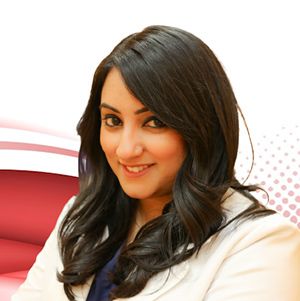

In the final six days of December, the 26th to the 31st, the six practices next to the LensCrafters locations in Georgia leased by Anisha Haji, OD, see twice the patient volume of any other week of the entire year. This isn’t a new occurrence for Dr. Haji, chief medical officer for Atlanta Eye Group, so she has created plans that help to increase efficiency and minimize some of the chaos.
“First, not only is the volume very high, but it’s also true that these patients often need a little extra help. They may not know what insurance they have; they haven’t done their paperwork. They passed by or saw that we were open and wanted to use their benefits,” she says. She knows that she cannot tame the week entirely, but there are steps she can take to keep her patients, doctors, and staff happy.
LIGHTEN THE MOOD
This isn’t an easy week for doctors or staff – or even the patients who may be waiting longer than usual. So, Dr. Haji does what she can to make it a little more fun. Snacks are available for staff and patients. Lunch is brought in for staff, because she knows that the associates are unlikely to have the chance to run out for a bite to eat.
She holds random raffles – again for patients and staff. Getting a gift card for a coffee helps take the sting out of a little longer wait or a stressful day. She’ll throw in bonuses or competitions. “We are all in it together, and that helps,” she says.
She sets the expectations with staff that there will undoubtedly be some stressful moments. “We have an office bingo round, with squares for things like “I had a patient who wore pajamas” or “I took five walk-ins.” If staff members, especially new ones who have never been through a week with this kind of pace, then experience a frustrated patient, they can accept it with a little more grace because they were primed that something like this might happen.


SCHEDULE SMART
Since she cannot physically increase the capacity of her locations, she adds hours for that week. Each of those days, the practices open an hour earlier and close an hour later. That adds 12 extra hours per location that week.
Dr. Haji generally doubles the staffing for the week. “When I hired doctors to help last year, I asked them at the end of the week if I could go ahead and preschedule them for this year. The advantage there is that they now have some familiarity with how we work,” she says. She also increases her technician hours to make sure that the ODs are supported.
Whenever she hires an associate doctor or staff member, Dr. Haji tells them that this final week of the year is a blackout time for vacations. “We need all hands on deck that week,” she says. She tries to schedule newer employees a little more heavily toward the beginning of this cycle – because the week gets busier. That gives her more experienced employees a little lighter load, so they don’t burn out.
Since they are closed on Christmas, she tells her associate doctors whom she employs that they can have off Dec. 24 and Jan. 1. She reaches out to associate doctors in practices nearby that close the final week of the year, to see if any of them want to pick up some extra time at a higher-than-average pay scale to help out that week.
Finally, she doesn’t schedule herself–although she fully expects to work. “Last year, two doctors tested positive for COVID-19 that week, but because I had not scheduled myself to be somewhere specific, I could fill in as much as possible where it was needed.” As the floating doctor, she can relieve the pressure points.
PRESCHEDULE WHEN POSSIBLE
Although some managed vision or insurance benefits require that a patient wait exactly one year between appointments, other patients can be scheduled sooner. The staff can call these patients and encourage them to make their appointments for an earlier time. Since some of these patients were last year’s last-minute walk-ins, they remember that it was a long wait. They may be more likely to schedule a time – and if they have to wait for the 31st of December to have their appointment, at least they may schedule for one of the early morning slots. These patients are also reminded to complete their paperwork before they come in, minimizing the number of patients who are sitting and taking care of that task in the reception area.
When patients are scheduled, it allows the staff to verify insurance and make other preparations that can help the day-of-exam process move a little more quickly. This effort helps bring in those family members who may be eligible for an eye exam but hadn’t scheduled one yet. By catching these patients and scheduling them for November, it opens new slots for the final week or takes a little pressure off when there are walk-ins.
The staff and doctors also do not schedule non-urgent follow-ups during this time. “This week is reserved for exams and emergencies only,” she says. Come January, they’ll be happy to see their follow-up patients – and this scheduling also keeps January very busy.
TRAIN EARLY
Dr. Haji starts hiring and training seasonal staff in the fall. “I want them to know how to pretest and scribe. They may not become our insurance gurus in those few weeks, but when the busy times comes, they’ll have worked with a number of patients already,” she says.
She also reviews her calendar from the previous year. “My business planning is very week-to-week. The exact days may not match up with how busy they were last year, but the weeks generally do align. I can know that one week is slower and the next is busier and then it slows down again for a week. That allows me to encourage a manager or doctor to use that slower period to take some time off or use that period to help familiarize new employees,” she says.
That’s a trick she uses throughout the year. These week-by-week comparisons help her gauge growth in each of the locations and spot how ideas implemented in one practice might be transferred in others.
WE’RE HERE FOR THE VISION
Dr. Haji says that while she does what she can to keep the week fun and manageable, she reminds the team that the reason the patients are coming to them is because they have no place else to go. “They have these benefits, and they want to use them. We can help them – and that’s why we’re here.”
Read more stories about women with successful careers at EssilorLuxottica locations here.



